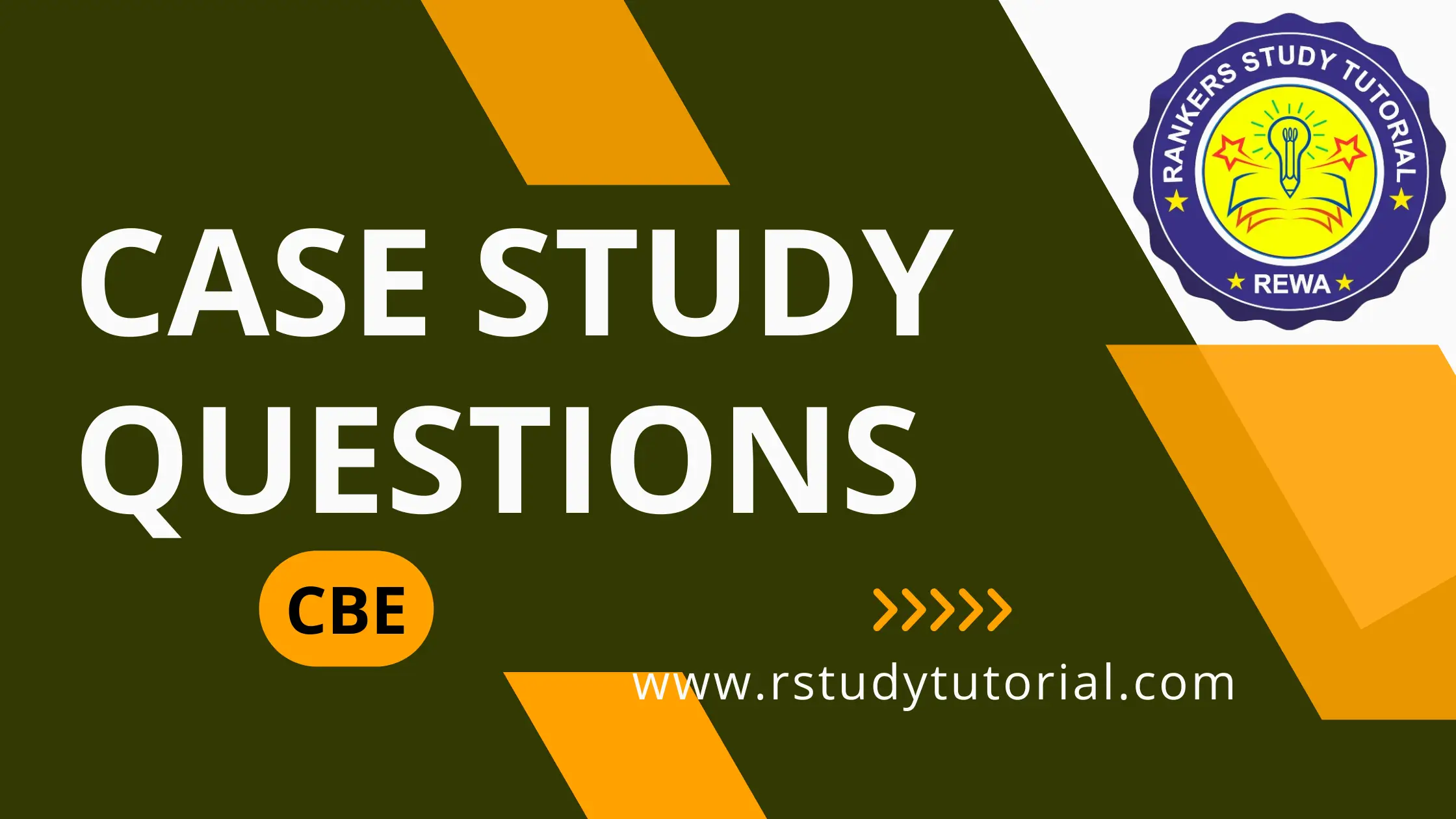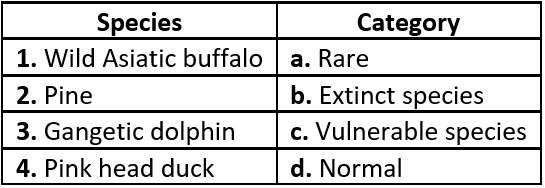What is Case Study Question / Paragraph Based Question?
A case study is a scenario in a particular academic / professional context which students are expected to analyse and respond to, guided by specific questions posed concerning the situation. In many cases, the scenario or case study involves a number of issues or problems that must be dealt with in a academic / professional workplace.
Why Case Study Questions are included in academics?
Case study assignments usually require students to identify problems and issues in a scenario, to demonstrate their developing knowledge of theories and academic / professional policies and to make decisions and recommendations based on these to either prevent or solve some of the issues in that scenario.
How to solve Case Study Questions?
There are several steps to writing an answer to a case study assignment:
STEP 1: Read the case study and questions carefully.
- Read the case and associated questions carefully.
- Highlight the main points of the case and any issues that you can identify.
- Read the questions closely and analyse what they are requiring you to do.
- Read the case again, linking the information that is relevant to each question you have been asked.
STEP 2: Identify the issues in the case study.
Case studies describe a situation which may arise in a particular profession or social context. They often involve a number of people in a complex situation. They will often describe a situation which is problematic, possibly in how it is dealt with, or in its complexity. An important part of your answer is to analyse the situation and to identify the issues/actions described in the case which may be problematic. The following questions may help you to do this:
- What actions were taken in the case?
- Were these actions the most appropriate and why?
- Were there any consequences of the actions taken?
- Was anything omitted or not considered?
- Were actions/procedures in line with existing codes of practice, policy or theories?
STEP 3: Link theory to practice.
Use your knowledge of existing codes of practice, theories and/or other academic / professional documents and behaviours to decide what was done appropriately and what was not.
STEP 4: Plan your answer.
It can be useful to use the questions you have been set as headings and to answer each part in turn, reducing the chance of omitting set questions. You can always take out the headings before you submit if you wish. Lecturers usually set questions in a logical order, so answer in the order they are written in your question.
STEP 5: Start writing your case study answer (for theory only)
Like any assignment, you will need an introduction, body sections in which you answer the questions put to you regarding the case study, and a conclusion.
STEP 6: Edit and proofread.
Read through your paper yourself to detect and correct other errors and omissions.
Check you have answered all questions and backed up your answer with relevant passage.
Types of Case Study Questions / Paragraph Based Questions
Case Study Questions / Paragraph Based Questions can be broadly classified into two types:
- MCQs type: In this type, student has to tick the correct option from various options.
- Theory type: In this type, student has to write proper solution / answer in cotext to the case study.
Case Study/ Passage Based Questions Chapter 2 Forest and Wildlife Resources
Type 1: MCQ type
Case Study Question 01
Read the extract given below and answer the questions that follow:
In India, joint forest management (JFM) programme furnishes a good example for involving local communities in the management and restoration of degraded forests. The programme has been in formal existence since 1988 when the state of Odisha passed the first resolution for joint forest management. JFM depends on the formation of local (village) institutions that undertake protection activities mostly on degraded forest land managed by the forest department. In return, the members of these communities are entitled to intermediary benefits like non-timber forest produces and share in the timber harvested by ‘successful protection’.
The clear lesson from the dynamics of both environmental destruction and reconstruction in India is that local communities everywhere have to be involved in some kind of natural resource management. But there is still a long way to go before local communities are at the centre stage in decision-making. Accept onlythose economic or developmental activities, that are people centric, environment-friendly and economically rewarding.
Answer the following MCQs by choosing the most appropriate option:
Question.1. Joint forest management (JFM) programme is an epitome of involving _________ and _________ in forest protection.
(a) communities, tradition
(b) communities and government
(c) forests department and state government
(d) forest department and centre government
Question.2. Which of the following titles suit best to the paragraph given above?
(a) Joint forest management—A success story
(b) India—on a right path
(c) Historical evolution of JFM in India
(d) Community and conservation
Question.3. Which of the following is not a target of JFM?
(a) Restoration of degraded forests
(b) Develop ways for ecological farming
(c) Control environmental degradation
(d) Include local communities in safeguarding the forests
Question.4. Local communities are ready to partner government in protection of forests. In return they get _________ .
(a) Forests products
(b) Share in forests land
(c) Government rewards
(d) Economic help
Ans.1. (b) communities and government
Ans.2. (d) Community and conservation
Ans.3. (b) Develop ways for ecological farming
Ans.4. (a) Forests products
Case Study Question 02
Read the extract given below and answer the questions that follow:
In the 1960s and 1970s, conservationists demanded a national wildlife protection programme. The Indian Wildlife (Protection) Act was implemented in 1972, with various provisions for protecting habitats. An all-India list of protected species was also published.
The thrust of the programme was towards protecting the remaining population of certain endangered species by banning hunting, giving legal protection to their habitats, and restricting trade in wildlife.
Subsequently, central and many state governments established national parks and wildlife sanctuaries about which you have already studied.
The central government also announced several projects for protecting specific animals, which were gravely threatened, including the tiger, the one-horned rhinoceros, the Kashmir stag or hangul, three types of crocodiles – fresh water crocodile, saltwater crocodile and the Gharial, the Asiatic lion, and others. Most recently, the Indian elephant, black buck (chinkara), the great Indian bustard (godawan) and the snow leopard, etc. have been given full or partial legal protection against hunting and trade throughout India.
Answer the following MCQs by choosing the most appropriate option:
Question.1. The target of conservation programme is to conserve _________ and _________.
(a) ecological diversity, life support system
(b) animals, source of food
(c) national, state forests
(d) habitat, biological loss
Question.2. Identify the animal species with the following category belong to:
(a) 1-c, 2-a, 3-b, 4-d
(b) 1-c, 2-b, 3-d, 4-a
(c) 1-b, 2-a, 3-d, 4-c
(d) 1-a, 2-d, 3-c, 4-b
Question.3. Which of the following animal species is not protected by central government?
(a) Asiatic Lion
(b) Gharials
(c) Hangul
(d) Himalayan Yew
Question.4. The main aim of the government to protect the endangered species was by ________.
(a) banning hunting and poaching
(b) limiting animal trade
(c) setting legalities
(d) All of the above
Ans.1. (a) ecological diversity, life support system
Ans.2. (d) 1-a, 2-d, 3-c, 4-b
Ans.3. (d) Himalayan Yew
Ans.4. (d) All of the above




